Difference between revisions of "Leather"
| Line 44: | Line 44: | ||
The most common kind of [[Tanning leather|tanning]] is [[Chrome tanning|chrome tanning]]. [[Leather clothings|Leather clothing]] and [[Leather shoes|leather shoes]] are almost exclusively chrome tanned nowadays. This is a harmless, in many foods occurring chrome style. It`s [[Chrome tanning|chrome III]]. Today's leather goods are well controlled and except rare exceptions free of toxins. | The most common kind of [[Tanning leather|tanning]] is [[Chrome tanning|chrome tanning]]. [[Leather clothings|Leather clothing]] and [[Leather shoes|leather shoes]] are almost exclusively chrome tanned nowadays. This is a harmless, in many foods occurring chrome style. It`s [[Chrome tanning|chrome III]]. Today's leather goods are well controlled and except rare exceptions free of toxins. | ||
| + | |||
==Why leather?== | ==Why leather?== | ||
| Line 86: | Line 87: | ||
<p> </p> | <p> </p> | ||
| − | === | + | ===Basic requirements for the term [[Genuine leather|Leather]]=== |
| − | + | As each country has different declaration rules, here some basics which should be be taken into account in all countries to assure that the use of the word "leather" is not meaningless. | |
| + | In each countries many words describe leather and types of leather. The rules have to make sure, that such terms can only be used if really leather is meant. In English declarations like "[[Aniline leather|Aniline]]", "[[Nubuck]]", "[[Suede]]", "[[Nappa leather|Nappa]]", "[[Genuine leather|Genuine Leather]]", "[[Cow hide|Cow Hide]]", "[[sheepskin|Sheepskin]]", "[[Leather jacket|Leather Jacket]]", "[[Leather wallets|Leather wallet]]" etc. should describe the material leather as defined in the norms and regulations. | ||
| − | + | If an offered product is not leather, it must be easy to find and clearely explained to the consumer. Lowercase notes on the backside and/or flowery declarations are not enough. The material declaration must be easy to understand to all and easy to find. | |
| − | + | ||
| − | + | ||
| − | + | ||
| − | + | ||
| − | + | ||
| − | + | ||
| + | If materials which only look like leather are offered, descriptions or names which might let the customer believe it is genuine leather, are not allowed. An exeption in a lot of countries are the words describing immitation leather. If in a country the consumers know that words like "Faux Leather", "Imitation Leather", "Synthetic Leather" or "Artificial Leather" are not decribing leather, these words are allowed to be used. | ||
| − | + | Confusing names inventions like "Koskin", "Textile-Leather", "Regenerated Leather" etc. must be forbidden to use. These names have been used in the past for materials which were not leather. Most customers thought to buy [[Genuine leather|Genuine Leather]]. | |
| − | + | Depending on the country and the spoken language and tradition also descriptions like "Faux Leather", "Faux Fur" might be confusing for the customers. Often such descriptions are in English, even if the national language is not. | |
| − | + | Descriptions like "Leather Look" and "leather-like" should be understandeble, but also depends on the used language and the the way in which consumers understand such descriptions. | |
| − | + | Clear explenations schould be allowed and cheating of the customers should be avoided. | |
| Line 113: | Line 110: | ||
</p> | </p> | ||
<p align=center> | <p align=center> | ||
| − | '' | + | ''Declarations like "Leather-Look" plus "Textile Leather" are not allowed in Germany. Especially the use of "Textile Leather" is forbidden.''<br></p> |
<p> </p> | <p> </p> | ||
| − | + | ===The fiber structure=== | |
| − | === | + | |
Als '''"Leder"''', '''"Echt Leder"''' oder '''"Echtes Leder"''' darf nur [[Spaltleder|ungespaltene]] oder [[Spaltleder|gespaltene]] [[Exotenleder|tierische]] [[Haut]] unter Erhaltung der gewachsenen Fasern und ihrer natürlichen Verflechtung bezeichnet werden. [[Lefa, Lederfaserstoff oder regeneriertes Leder|Aufgelöste oder gemahlene]] oder mit Bindemitteln verklebte und zu [[Lefa, Lederfaserstoff oder regeneriertes Leder|Bahnen]] verarbeitete Materialen dürfen nicht als Leder bezeichnet werden. Solche Materialien werden als "[[Lefa|Lederfaserstoff]]" oder abekürzt "[[Lefa]]" bezeichnet. | Als '''"Leder"''', '''"Echt Leder"''' oder '''"Echtes Leder"''' darf nur [[Spaltleder|ungespaltene]] oder [[Spaltleder|gespaltene]] [[Exotenleder|tierische]] [[Haut]] unter Erhaltung der gewachsenen Fasern und ihrer natürlichen Verflechtung bezeichnet werden. [[Lefa, Lederfaserstoff oder regeneriertes Leder|Aufgelöste oder gemahlene]] oder mit Bindemitteln verklebte und zu [[Lefa, Lederfaserstoff oder regeneriertes Leder|Bahnen]] verarbeitete Materialen dürfen nicht als Leder bezeichnet werden. Solche Materialien werden als "[[Lefa|Lederfaserstoff]]" oder abekürzt "[[Lefa]]" bezeichnet. | ||
Revision as of 16:27, 1 March 2015
Contents
- 1 History
- 2 Of what does leather consist?
- 3 Why leather?
- 4 What materials can be called leather?
- 4.1 Basic requirements for the term Leather
- 4.2 The fiber structure
- 4.3 Die Schichtstärke und das Verhältnis verschiedener Schichten
- 4.4 Die Mengenproportion zu anderen Materialien
- 4.5 Spaltleder
- 4.6 Kunstleder mit Lederfasern auf der Rückseite
- 4.7 Lackleder
- 4.8 Die Kennzeichnungspflicht bei Schuhen
- 4.9 Die Kennzeichnung von Ledern und Fellen durch Ledersymbols oder Texte
- 5 Weitere Informationen
- 6 Filme rund ums Thema Leder
History
Leather accompanied mankind since the beginning. At the beginning of human history furs and hides of captured animals gave protection from cold and humidity in form of blankets, leather clothings, shoes or boots. Leather also was used as tent walls, kayak boat walls, thongs, belts or leather vessels. Because of the ability to use leather, it was possible to survive even in the coldest regions of our planet and to generally make the life more comfortable.
Nowadays, most leather is made of animals we use as food. Cow leather, sheep leather, goatskin or pig leather are the most common species people eat.
The tanning process prevents the decay of animal skin. Tanning is probably an accidental discovery. Initially, animal skins were fleshed, dried and rubbed with grease and oil to preserve them, too keep them softner and to make them water resistant.
At some point someone must have discovered, that animal skin, which was longer time in water with plant residues, absorbed dissolved tannins from the plant residues and converted the skin to resistant leather. From this tanners developed a sophisticated tanning process which made a long-lasting and durable end product from hides and skins.
At the end of the 19th century the chrome tanning was discovered. This new tanning proecess shortened the production time enormously and was the start of the industrialization of leather production.
Today tanners offer endless types of leather with different leather surfaces and colours.
Of what does leather consist?
Leather consists of collagen fibers (protein). These fibers are intertwined. Each collagen fiber consists of up to 2 million fibrils. The density of intertwining varies from species to species. But even within an animal skin, the density of intertwining differs significantly. A looser fibre structure is less resistant to tearing than a dense structure.
Leather in oblique section and cross section. At the top, the fiber intertwining is denser and more stable.
Tanned leather consists depending on type of leather, type of tanning and type of clouration of 45 to 75% hide substance, 8 to 45% tannins, 1 to 25% oils and / or fats, up to 3% dye and pigment colour and 8 to 15% moisture. The tannins prevents the decay of the hide substance and oils, fats and moisture make the leather supple.
The most common kind of tanning is chrome tanning. Leather clothing and leather shoes are almost exclusively chrome tanned nowadays. This is a harmless, in many foods occurring chrome style. It`s chrome III. Today's leather goods are well controlled and except rare exceptions free of toxins.
Why leather?
Leather is a noble and natural material, which is mainly mainly for processed shoes, furniture, car interiors, clothings and leather bags. About 500,000 tons of leather are produced each year, which is about 1.5 billion square meters.
Leather is a natural product, durable and warm. Leather also has a technical advantage over alternative materials. One gram of leather has up to 300 m² interior surface, because its fine fibers are tightly intertwined. As a result, leather has a high resistance to tearing, stretching and bending. Leather is resistant to aging and temperature resistant. Leather can absorb up to 30% water, without being "wet". Leather can absorb moisture inside, and return it to the outside. Leather has an insulating effect. No imitation leather or any other substitute achieves these skills approximately. In particular for shoes and leather clothing, leather is a clear advantage and offers unrivaled comfort with high durability. Another advantage of leather is the low flammability.
Leather has an incredible diversity. Leather can be produced from different animal species. There are many different types of leather. Suede, nubuk, buckskin, aniline, semi-aniline, pigmented leather, full grain, corrected grain, bycast, pull up, fur and a lot more. The grain pattern of leather can be enhanced or flattened. It can also be carved with individual motifs or it can be embossed entirely. Buttery soft garment leather can be produced as well as hard and stiff leather soles and leather belts. Leather can be formed or perforated.
What materials can be called leather?
Leather can be manufactured and processed in a wide spectrum of varieties. Leather is mixed with other materials and frequently the question arises, if the description "Leather" or "Genuine Leather" is used conforming to the norms and laws. All countries have different standards and laws. Sometimes there are different rules for different uses of leather within a country. In Germany, for example, in upholstered furniture split leather must be specified in the description. To only declare "Leather" is not allowed. This rule does not apply to automotive leather. Many manufacturers of high-priced vehicles in Germany process split leather in car interiors without specifying it in the material description. In countries like France the rules are much stricter.
As the rules are different from country to country, this dictionary only can help to ask the right questions and to teach how to distinguish leather qualities. There are many varieties of good and bad leather. But who buys "genuine Leather", should always check before buying, if the material is correctly described and if the |leather quality is acceptable for the specified price.
In particular, in online business or discounted offers "leather" is frequently incorrect declared. It's difficult for the customers to find out, if it's really "Genuine Leather".
Different countries have different norms, standards, regulations and terms to define leather and leather types. These are not laws. But norms and regulations help in case of disagreements and are cited by experts in legal disputes.
In Germany, for example, the following standards are of importance:
- RAL 060 A2: Defines the term "leather" and the differentiation from other materials.
- DIN EN 15987 (European standard): Leather - Terminology - Key definitions for the leather trade.
- DIN 68871: Defines the terms for leather for the furniture upholstery.
- DIN EN 16223 (European standard): Leather - Requirements for the designation and description of leather in upholstery and automotive interior applications.
Symbol Genuine Leather.
Basic requirements for the term Leather
As each country has different declaration rules, here some basics which should be be taken into account in all countries to assure that the use of the word "leather" is not meaningless.
In each countries many words describe leather and types of leather. The rules have to make sure, that such terms can only be used if really leather is meant. In English declarations like "Aniline", "Nubuck", "Suede", "Nappa", "Genuine Leather", "Cow Hide", "Sheepskin", "Leather Jacket", "Leather wallet" etc. should describe the material leather as defined in the norms and regulations.
If an offered product is not leather, it must be easy to find and clearely explained to the consumer. Lowercase notes on the backside and/or flowery declarations are not enough. The material declaration must be easy to understand to all and easy to find.
If materials which only look like leather are offered, descriptions or names which might let the customer believe it is genuine leather, are not allowed. An exeption in a lot of countries are the words describing immitation leather. If in a country the consumers know that words like "Faux Leather", "Imitation Leather", "Synthetic Leather" or "Artificial Leather" are not decribing leather, these words are allowed to be used.
Confusing names inventions like "Koskin", "Textile-Leather", "Regenerated Leather" etc. must be forbidden to use. These names have been used in the past for materials which were not leather. Most customers thought to buy Genuine Leather.
Depending on the country and the spoken language and tradition also descriptions like "Faux Leather", "Faux Fur" might be confusing for the customers. Often such descriptions are in English, even if the national language is not.
Descriptions like "Leather Look" and "leather-like" should be understandeble, but also depends on the used language and the the way in which consumers understand such descriptions.
Clear explenations schould be allowed and cheating of the customers should be avoided.
Declarations like "Leather-Look" plus "Textile Leather" are not allowed in Germany. Especially the use of "Textile Leather" is forbidden.
The fiber structure
Als "Leder", "Echt Leder" oder "Echtes Leder" darf nur ungespaltene oder gespaltene tierische Haut unter Erhaltung der gewachsenen Fasern und ihrer natürlichen Verflechtung bezeichnet werden. Aufgelöste oder gemahlene oder mit Bindemitteln verklebte und zu Bahnen verarbeitete Materialen dürfen nicht als Leder bezeichnet werden. Solche Materialien werden als "Lederfaserstoff" oder abekürzt "Lefa" bezeichnet.
Die Schichtstärke und das Verhältnis verschiedener Schichten
Leder, wo eine Schichtstärke von mehr als 0,15 Millimetern aufgetragen wurde (Farbe mit Bindemitteln, Folie, Schaum etc.), muss als "beschichtetes Leder" deklariert werden. Die Schichtstärke darf aber insgesamt nicht mehr als 1/3 der Gesamtstärke ausmachen. Die "Ein Drittel Regel" ist z.B. relevant, wenn harte Oberflächen beschichtet werden (Fotoapparate, Gehäuse etc.). Dann wird sehr dünnes Leder verwendet und zum Schutz beschichtet.
- > 0,15 mm Beschichtung auf der Oberfläche: "beschichtetes Leder"
- > 0,15 mm Beschichtung auf der Oberfläche und Schichtstärke mehr als ein Drittel der Gesamtstärke: Darf nicht als Leder bezeichnet werden.
- Verbundmaterialien (Uhrenarmband, Gürtel, Riemen etc. mit weniger als 80% Leder an der Gesamtstärke müssen für den Verbraucher klar beschrieben werden (z.B. außen Leder, innen Textil, siehe nächsten Punkt).
Die Mengenproportion zu anderen Materialien
Lederprodukte müssen zum überwiegenden Teil, der für den Gebrauch erheblich ist, aus echtem Leder bestehen oder dürfen ansonsten nicht derart benannt werden. Letzteres ist speziell der Fall, wenn das Produkt vollständig oder zum größten Teil aus Kunstleder hergestellt ist.
Grundsätzlich muss der Werkstoff, der für das Produkt maßgeblich ist, ausgewiesen werden (z. B. als "Kunstledertasche mit Lederdekoration").
Bei "Volllederausstattungen" in Fahrzeugen müssen alle Flächen aus Leder sein, die optisch einer Lederoberfläche entsprechen.
Ist das Leder in einem Produkt fest mit einem anderen Werkstoff verbunden (z. B. Aufkleben auf textilen Untergrund), so handelt es sich nur dann um ein Lederprodukt, wenn die Gesamtdicke des Produktes zu mindestens 80 Prozent vom Leder bestimmt wird. Ansonsten müssen Außen- und Innenseite etwa eines Uhrarmbandes separat deklariert werden. Im Übrigen ist bei Kunstlederprodukten die genaue Art des verwendeten Kunststoffes anzugeben.
Besteht ein Gegenstand nur zum Teil aus Leder, sind Wortverbindungen mit Leder zur Bezeichnung des Produktes nur erlaubt, wenn Leder den überwiegenden und für die Gebrauchseigenschaften wichtigsten Bestandteil darstellt. Ist dies nicht der Fall, sind die anderen Materialien ebenfalls eindeutig zu bezeichnen.
Auf keinen Fall darf der Eindruck erweckt werden, dass sämtliche Teile aus Leder sind. Das gilt insbesondere für Flächen, die auf den ersten Blick wie Leder aussehen. Beispiele für korrekte Bezeichnungen bei Kombination von Leder mit anderen Materialien bei Ledermöbeln, wo die Kontaktflächen im unteren Preissegment oft aus "Leder" sind, aber die Spannteile aus Kunstleder oder Spaltleder: "Ledersofa - Rückseite und Seitenteile aus Kunstleder" (oder "Spaltleder").
Bei einer Lederhandtasche oder einem Lederkoffer ist dem Endverbraucher aber klar, dass das Innenleben solcher Objekte nicht aus Leder ist. Hier geht man davon aus, dass mit "für die Gebrauchseigenschaften wichtigsten Bestandteil" die äußeren Sichtflächen gemeint sind, die dann auch wie Leder aussehen.
Spaltleder
Bei der Deklaration von Spaltledern sind die Normen widersprüchlich. Laut der RAL 060 A2 darf ein Spaltleder ohne weiter Angaben als "Leder" bezeichnet werden. Laut der DIN EN 15987 muss ein Spaltleder immer als solches deklariert werden und darf nicht nur als "Leder" bezeichnet werden. Wenn es angegeben wird, taucht hier auch der Begriff "Split" auf.
Unstreitig ist, dass ein Spaltleder nicht die gleiche Wertigkeit hat wie ein Narbenleder. Wird ein Spaltleder aber so beschichtet,dass es wie ein Narbenleder aussieht, kann der Endverbraucher die Qualität nicht prüfen. Das Leder ist dann wie ein mit Edelholz furniertes geringwertigeres Holz. Wobei die obere Schicht dann gar kein Leder ist und die Narbung durch eine Prägung geschaffen wurde.
Häufig werden bei Möbeln die Kontaktflächen (Rücken, Sitze, Armlehnen und Armlehneninnenseiten) mit Narbenleder bezogen und der Rest mit beschichtetem Spaltleder oder mit Kunstleder. Spaltleder ist nicht erlaubt (RAL-GZ 430/4). In solchen Fällen sollte die Deklaration lauten: "Ledersofa - Rückseite und Seitenteile aus Spaltleder" (RAL-GZ 430/4 und DIN 68871). Leider werden die Käufern von Möbeln sehr häufig nicht richtig informiert. Daher sollte man beim Möbelkauf immer genau nachfragen, um welche Materialien es sich wirklich handelt. Leider sind die Deklarationen insbesondere beim Onlinekauf sehr häufig falsch und werden auch bei Rückfragen nicht korrigiert. Daher die Materialart in solchen Fällen immer bestätigen lassen! (siehe "Was man beim Neukauf von Ledermöbeln beachten sollte")
Auch die Fahrzeughersteller bis rauf in die höheren Preisklassen verwenden zunehmend beschichtetes oder geprägtes Spaltleder für die unbelasteten Bereiche (Türverkleidungen, Kopfstützen) ohne entsprechende Deklaration. Der Käufer erwirbt dann gutgläubig eine hochwertige "Lederausstattung" oder "Volllederausstattung" zu einem hohen Aufpreis. Auch hier sollte selbst bei den hochpreisigen Marken nachgefragt werden, und man sollte sich im Vertrag zusichern lassen, dass kein Spaltleder verarbeitet wurde, sondern hochwertigeres "Narbenleder".
Zwar sind die Regelungen der RAL 060 A2 für die Bezeichnung des Materials "Leder" sehr verbraucherorientiert, aber es wäre Wünschenswert, wenn das weniger stabile Spaltleder wie in der DIN EN 15987 auch als solches gekennzeichnet werden müsste, um eine einheitliche Begrifflichkeit zu führen. Hier besteht Nachbesserungsbedarf und Kunden können sich nur so schützen, das sie sich beim Möbel- oder Autokauf im Vertrag schriftlich bestätigen lassen, dass sie das hochwertigere Narbenleder erhalten haben.
Bild 1: Folienbeschichtung bei Spaltledern - Bild 2: folienbeschichtes PU-Leder
Filme über die Herstellung von Spaltledern und PU-Ledern
Kunstleder mit Lederfasern auf der Rückseite
Bei diesen Materialien handelt es sich um Kunstleder, wo auf der Rückseite Lederfasern verklebt werden. In der Werbung werden diese Materialien dann als "lederähnlich" gepriesen oder sogar sogar mit dem Begriff "Leder" verknüpft. Diese Bezeichnung ist aber unzulässig. Es darf weder als "Leder", noch als "Echtes Leder" bezeichnet werden.
Ein Extrembeispiel für Falschdeklarationen
Lackleder
Bei Lackledern darf der Begriff "Lackleder" auch dann verwendet werden, wenn die Schichtstärke eigentlich die Bezeichnung "beschichtetes Leder" vorschreibt. Bei Lackledern ist allgemein bekannt, dass eine stärkere Schicht aufgetragen ist.
Die Kennzeichnungspflicht bei Schuhen
Bei Schuhen gibt es im Gegensatz zu Fahrzeug-, Möbel- und Bekleidungsledern eine Kennzeichnungspflicht. Es wäre wünschenswert, wenn es das zum Schutz des Konsumenten auch für andere Lederartikel gäbe.
Die Kennzeichnung von Ledern und Fellen durch Ledersymbols oder Texte
Manche Kunden wünschen echtes Leder oder echte Felle, andere wollen keine tierischen Produkte. Als Kundeninformation gibt es unterschiedliche Symbole und Texte, um das angebotene Material zu kennzeichnen.
Weitere Informationen
- Lederschulungen
- Gutachter für Leder
- Kennzeichnung von Leder
- Echtes Leder
- Lederqualität
- Leather types
- Lederindustrie
- Kritiker des Naturproduks Leder
- Kunstleder mit Lederfasern auf der Rückseite
- Schlechte Erfahrungen beim Ledermöbelkauf
- Untersuchung Materialkennzeichnungen beim Kauf von Handytaschen
- Deklarations- und Materialbegutachtung von Lederriemen und Gürteln
Filme rund ums Thema Leder
Leather production in der Gerberei - Glattlederarten
Leder nach Tierarten - Motive auf Leder












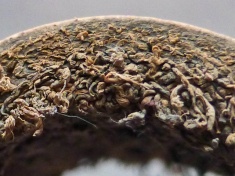
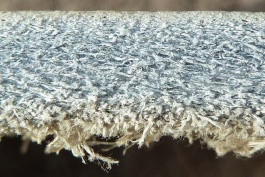





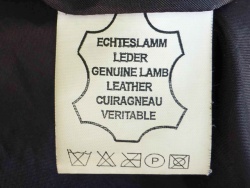



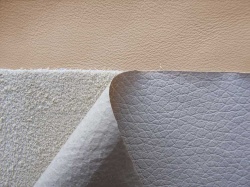

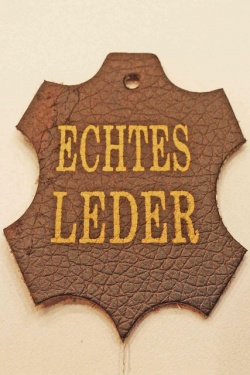
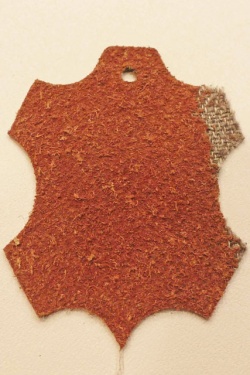

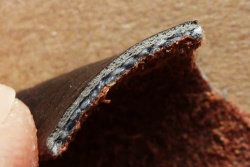




 a kotori web solution
a kotori web solution